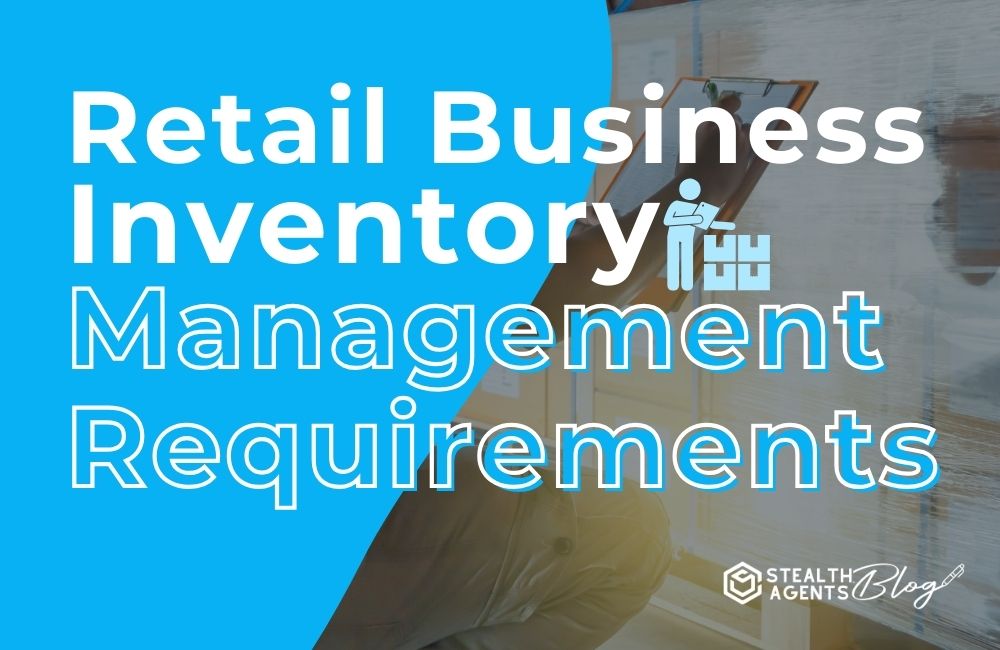Retail Business Inventory Management: Essential Practices for Thriving in Today’s Marketplace
Walk into any retail store, and you’re immersed in the tangible results of a complex dance of supply and demand. Product shelves neatly arranged, salespeople busily assisting customers, and the turn of inventory happening rhythmically behind the scenes are a snapshot of daily retail operations. Yet, to maintain this ballet’s grace and profitability, retailers must ingeniously manage their inventory like seasoned conductors and choreographers.
This blog post unravels the intricacies of retail business inventory management, offering a symphony of strategies to harmonize your stock levels with consumer appetites, optimize operations, and reduce waste. Whether you are a brick-and-mortar store or an e-commerce giant, refining your inventory approach isn’t just a best practice—it’s a survival skill in today’s increasingly competitive market.
Understanding Inventory Management: The Crux of Retail Operations
Inventory management is to retail what a compass is to a captain; it provides direction and control over the vessel’s operational course. But what does it really mean for a retail business? It’s the practice of overseeing, storing, and managing your company’s goods in a way that not only doesn’t drain resources but actively generates value.
Consider these items backstage essentials:
-
Tracking inventory levels in real-time.
-
Anticipating peaks and valleys in market demand.
-
Nurturing relationships with suppliers.
-
Maximizing your stock’s efficiency.
At the end of the day, inventory management is about balance—a careful equilibrium between what you have and what you need.
The Five Pivotal Inventory Management Requirements
Your inventory is more than just a list of products—it’s a live organism within the ecosystem of your business. Here are the five requirements that will help it thrive.
1. Inventory Tracking and Monitoring
Accurate inventory tracking is the heartbeat of your business. Without knowing exactly what you have on hand, you’re flying blind. Utilizing barcoding systems or RFID technology ensures you know the quantity and location of every product, leading to streamlined operations and less time spent on manual counting.
2. Demand Forecasting and Planning
Forecasting the future is tricky business, but not when you’ve got the data to back it up. Historical sales figures and consumer trends help you predict future demand, keeping you ahead of stockouts and overstock situations, which can be incredibly costly.
3. Supplier Relationship Management
Your suppliers are the string section to your inventory management symphony. Nurture these relationships to establish reliable lead times, negotiate for fair prices, and develop contingency plans should the unexpected occur.
4. Inventory Optimization Techniques
Just as a chef reduces a sauce to intensify its flavor, optimization techniques aim to concentrate your inventory’s strengths. This might involve identifying slow-moving stock and offering promotions to clear them, or strategically placing high-demand items for quicker access.
5. Technology Integration
Gone are the days of clipboard inventory checks. Today’s retail inventory management hinges on technology integration. Whether it’s a sophisticated inventory management solution or an upgrade to your existing Point-of-Sale system, technology ensures that you can run your business with data-driven precision.
The Benefits of Meeting Inventory Management Requirements
Meeting these inventory demands isn’t just for your business’ good. It’s also a boon for your customers, your community, and your service providers. It’s about creating a better marketplace for all.
Improved Customer Satisfaction
Customers want the products they desire, when they want them. Meeting these expectations means higher customer satisfaction, repeat business, and exemplary word-of-mouth marketing.
Reduced Costs and Waste
Operational costs lower when you’re not stuck with deadstock. By nailing your inventory demands, you also cut down on the hidden costs of lost opportunities and storage.
*advertisement*
Tired & Overwhelmed With Administrative Tasks?
Hire A Top 1% Virtual Assistant From Stealth Agents!

Sign Up Below & Hire A Top 1% Virtual Assistant
Rated 4.7 Stars Serving Over 2,000+ Customers.
Hire Top 1% Virtual Assistants For $10-$15 Per Hour
Ask About Our 14 Day Trial!
*advertisement*
Enhanced Decision-Making and Scalability
When you have a firm grip on what’s moving and what’s not, your business can pivot and scale with confidence. Better decisions are made with a clear view of your available inventory and its performance.
Implementing Inventory Management Solutions
You know what you need, now you need to know how to get it. Implementing the right solutions doesn’t have to be complicated, but it does need to be thorough.
Technology Is Your Ally
From robust inventory management software to simple barcode scanners, the tech of today offers solutions for businesses of all sizes. Pick what fits your business and your budget, and tailor your management accordingly.
Staff Training and Process Improvement
A new tool in the wrong hands is an expensive paperweight. Training your staff ensures that front-end employees know how to interact with the new system, and back-end staff are conscious of keeping processes and systems up to date.
Navigating Inventory Management Challenges
No retail ship sails smooth waters. There are storms to weather and reefs to avoid, and inventory management has its fair share of challenges.
Inventory Inaccuracies
A miscount here, a misplaced item there, and your inventory levels are no longer reliable. Implementing strict check-and-balance processes can help eliminate these issues.
Seasonal Fluctuations
The winter coats you can’t seem to sell in summer, or the bathing suits that gather dust in December are all too common. Use historical data for smarter purchasing decisions leading up to each season.
Inventory Management Software Selection
With a barrage of options out there, selecting the right software can be daunting. Assess your business needs and constraints thoroughly, and consider trial periods before making any hefty commitments.
Conclusion: The Tapestry of Efficient Inventory Management
The art of retail lies in the harmony between what’s on the shelf and what walks out the door with a customer. By maintaining a sharp focus on inventory management, you’re not just managing goods. You’re managing touchpoints with your customers, the rhythm of your store’s operations, and the betterment of your bottom line.
Efficient inventory management might seem like an overwhelming task, but remember, Rome wasn’t built in a day, and neither is any successful retail operation. Each step towards meeting these requirements builds a stronger foundation for your future in retail— a future that you’ll steer with the confident hand of a seasoned navigator.









